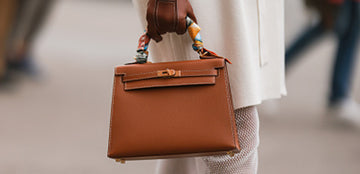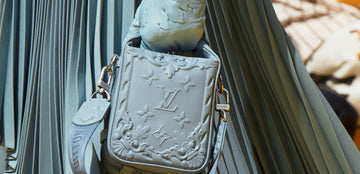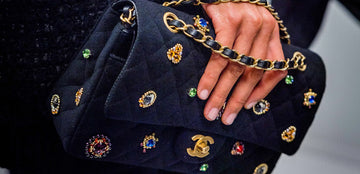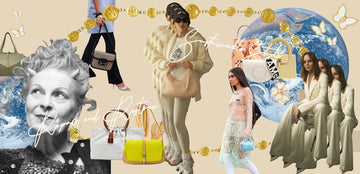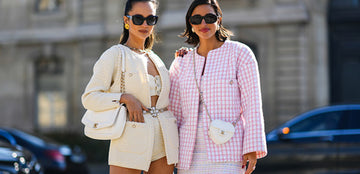
Open for Vintage investigates why ‘what goes around comes around’.
They say history repeats itself, and it's true even for fashion. New season collections nearly always contain a nod to a past trend. Sometimes, a whole fashion movement is revived, such as the current Y2K trend, which gave new life to the aesthetics from the year 2000 – and is still going strong.
Resale and vintage markets aren’t new concepts. However, online platforms like Open for Vintage offer an innovative approach, where seekers can find highly curated collections, just as they would buying brand new.
The Trend Cycle
We know that trends circle back around, but why and how? Enter: the trend cycle. This is a fashion industry prediction theory confirming exactly what we already know, that trends are introduced and slowly fade out, only to then eventually come back in again.
The cycle has five stages: introduction, rise, acceptance, decline, and obsolescence. A new style comes into the fashion world, is worn by celebrities and influencers, becomes mainstream, then becomes ‘overkill’ and is no longer seen as an aspirational trend.
The cycle now isn’t as relevant. It used to predict that trends would come back around every 20 years. Social media, and particularly TikTok, has accelerated the trend cycle with micro trends, such as barbie-core and cottage-core. This fuels the second-hand and vintage markets. Brands can’t keep up with producing and marketing items for each niche micro-trend. Instead, this rapid reincarnation of old styles is music to the ears of second-hand and vintage lovers and explains how the second-hand market is due to be worth approximately £40 billion by 2025, with more and more items being circulated back into people’s wardrobes.
Celebrity Influence
The Kardashians, Jenners, Bella Hadid and Dua Lipa all love a vintage moment. Celebrities like these frequently prove that true style can and will stand the test of time, and the constant hunt for unique pieces that set them apart is pushing them – or likely their stylists – towards vintage and archival pieces. Not only is a vintage look difficult to replicate, but certain pieces also hold a cultural currency that comes along with select collections; from Tom Ford at Gucci to John Galliano at Dior, select styles create exactly the sort of moment that gets celebrities on the ‘best dressed’ lists.
How Luxury Got Involved
The nature of luxury goes hand-in-hand with sustainable consumption. It requires people to buy consciously: a luxury coat may cost thousands whereas fast fashion brands can offer this at less than one-tenth of the price, meaning customers need to think more about purchasing luxury fashion.
Some brands have responded by facilitating the easy transition of second-hand and vintage purchasing – for example, Hermes allows pre-owned items to be repaired by their ateliers – regardless of who the original purchaser is. Other brands wanted to capitalise on the trend cycle by re-releasing old styles, like the Fendi Baguette, Fendi Croissant, Dior Saddle, and Prada Re-edition. This made the quirky and rare vintage pieces even more desirable.
The Generation Saying ‘No’ to Fast Fashion
The honest truth is that market expectations are changing. The fashion industry has always been associated with social and environmental problems, from pollution and emissions to the lacking rights of garment workers. Instagram reported that in 2022, sustainability was a key issue for Gen Z, and as climate concerns rise, more consumers plan to thrift their clothing.
As times have changed, so has the perception towards second-hand and vintage, which is now as good as shopping new, if not better. With the heightened knowledge of the negative impacts of fast fashion and garment circularity, the fashion-forward among us are now moving towards second-hand and vintage shopping – and they aren’t going back.


